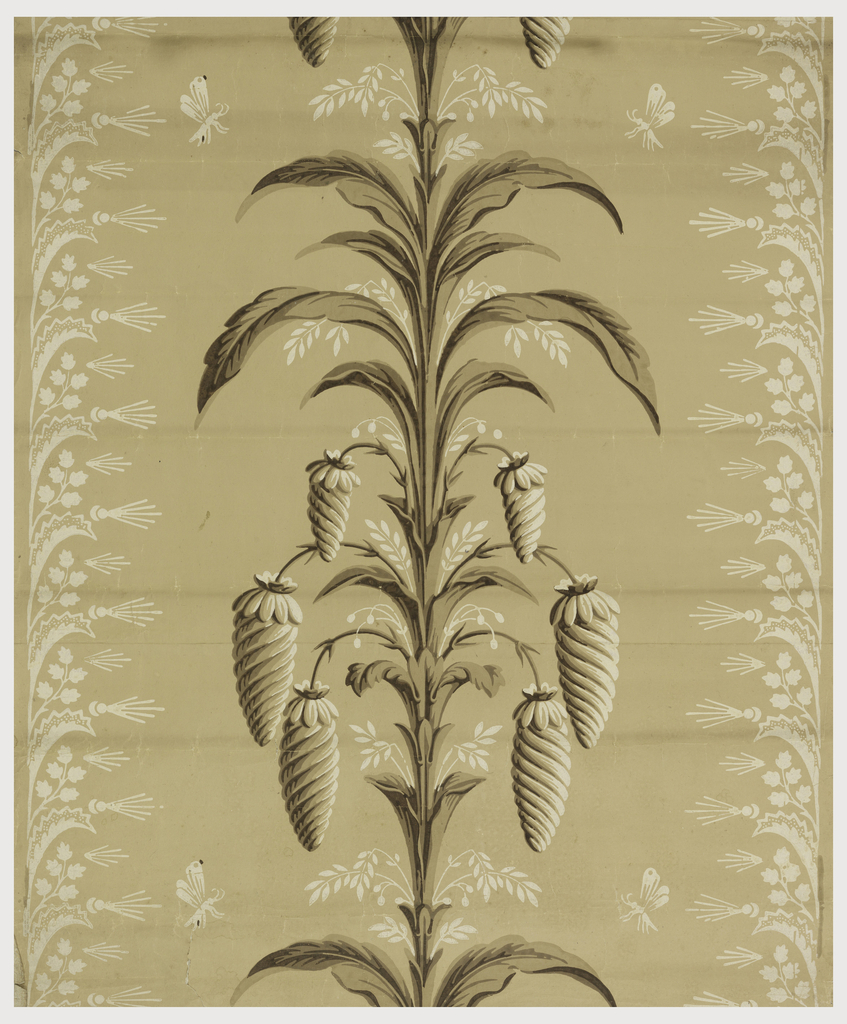A highly symmetrical stalk grows confidently up the center of this sidewall panel, which was manufactured in France in the early nineteenth century. Acanthus-like foliage and strange, swirly pods droop heavily downwards, accented by wispy little branches of leaves and un-opened blossoms. Winged insects descend towards the stalk from either side. Presumably their mission is one of friendly pollination, but there seems to be something sinister about their choreographed descent. A frilly border of stylized flowers and serrated leaves frames the central images. The design is block printed in tones of brown and taupe on a doe-skin colored background, giving the whole piece a dustbowl sort of vibe. This is probably the opposite of what the designer intended, as the flowering plants seem to denote a bountiful harvest. Regardless of the mixed message, France was considered the leading tastemaker in terms of wallpaper (and interior decoration in general) in the Western world at the turn of the nineteenth century, and their products were well-received both in Europe and in the new United States. It is unclear where in the home a wallpaper like this would have been hung. It most likely would have been used in a public space, such as a drawing room or parlor, though it could have been considered appropriate for a master bedroom as well.
This wallpaper makes me wish I was a botanist so I could understand what the heck kind of plant it is trying to portray. It is vaguely reminiscent of the hop plant of beer-brewing fame, but that’s just an amateur’s guess. Though this odd plant with its sculptural, twisted pods does not appear to abide by the laws of nature, it does quite nicely adhere the principles of neoclassicism, which was a tremendously popular style at the time this paper was produced. The symmetry, the understated colors, the hints of acanthus and delicate figures must certainly be considered under the influence Robert Adam and his followers.
Anna Rasche is a student in the History of Decorative Arts & Design graduate Program at the Cooper Hewitt, and is a Master’s Fellow in the Wallcoverings Department.

2 thoughts on “Mystery Plant”
Tami Bartlett on January 5, 2015 at 12:36 pm
The pods look more like finials than fauna!
Tami Bartlett on January 5, 2015 at 12:37 pm
I mean flora!